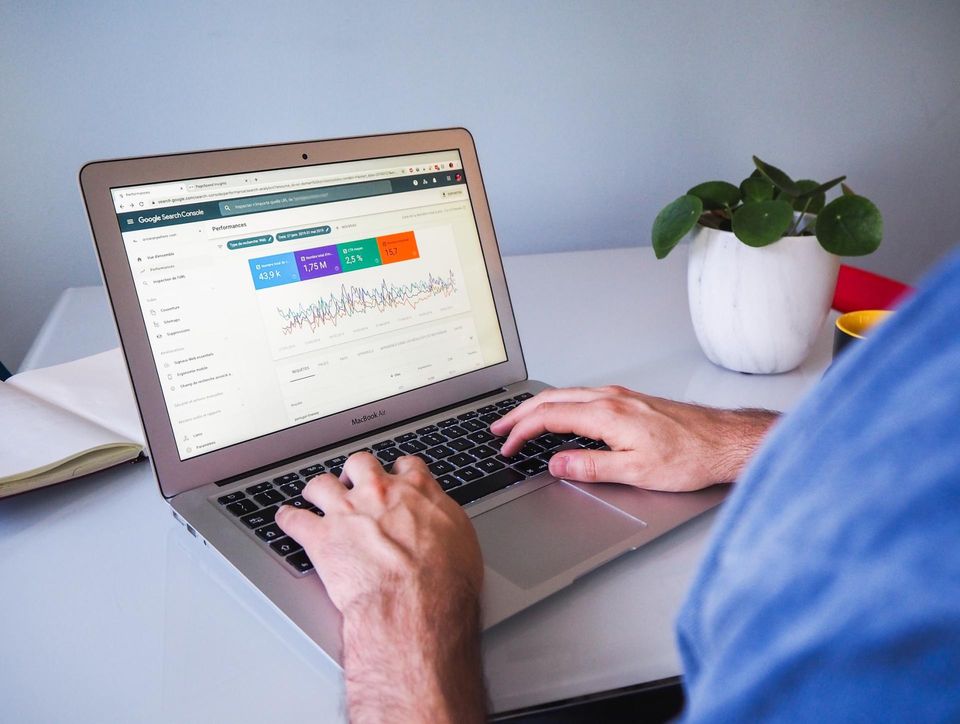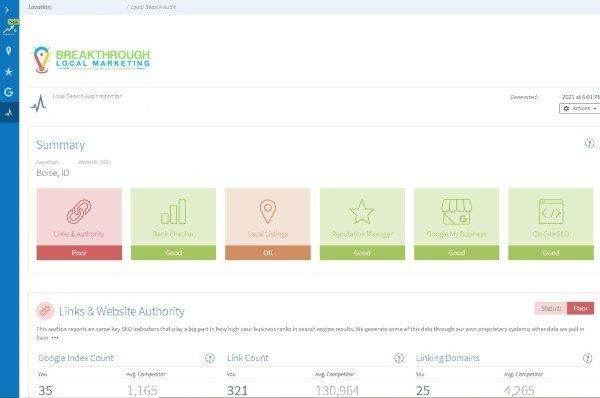SEO Basics

SEO- Where to start?
SEO is extremely important not only to Google and other Search Engines, more importantly to end-users.
Following some of the basics SEO tips provided by Google, you can better ensure your website is setup correctly and serves end-users best.
This quote can be found at the top of Googles SEO Starter Guide
“Even though this guide's title contains the words "search engine", we'd like to say that you should base your optimization decisions first and foremost on what's best for the visitors of your site.” - Google
Let’s keep end-users in mind and dive into some of their tips found in google article above.
Great Content
It has been said “Content is King” and it surely still reigns. Take this excerpt from Google’s SEO Starters Guide below.
“Creating compelling and useful content will likely influence your website more than any of the other factors discussed here”.
Old School SEO
SEO has been manipulated by less than ethical SEO services for years. While Google is actively combating this, one of the main areas of focus is quality website content.
There was once a day when a website could be filled or “stuffed” with Key Words, main search terms. This was either done just blatantly with strings of Key Words (KW) going on forever. Or they would hide this KW stuffing with white text and white background kind of stuff.
This lead to a tremendous push back from users as the search results where filled with garbage. While Google certainly never intended to reward this behavior, it worked, until google updated their algorithm and tightened up on KW density eliminating much of the spam.
Today's SEO-
In today’s search environment Key Words are essential to incorporate into your content, although they should only be used when appropriate. Along with the evolution in search queries as mobile and voice search really take hold. Its not as important to focus on one KW, rather on answering questions one might search for our solutions to problems.
Your content should be easy to read and flow topic to topic. Answering the classic 5 W’s (who, what, where, when & Why) should help you organize your content a bit.
Content should be on topic to your specific page and answer questions from various perspectives while making it easy for users to take action.
Keep your content unique and continuous. Think of a writing assignment at school, if you copy and paste your content, you just won’t get any credit. There are great times to quote other content and give them credit. However, most of your web content should be unique to that specific page. It also helps to refresh or update your content as it serves both returning and new customers.
Structure your content into main topics and subtopics. Utilize headings and separate topics allowing users to focus on what they want quickly.
Content should also show your businesses personality, when at all possible.
A great way to do this is through a blog. But, don’t forget about Social Sites. These allow for multiple content streams to reach your customer and drive traffic to your site.
Clear Page Titles
Page Title are important to the overall search experience. To both Search Engines like Google and to end-users or searchers on-line. They appear not only at the top of your browser but in the first line of your results. This a good place to use a main KW, caution do not stuff or use too many KW’s in your title.
You will find that in the three basic elements of a results listing. When an end user searches for a KW or phrase, if those words match words found in the Page Title, Page Description and Page URL, they will be displayed in Bold.
Making it easy for the end-user to associate your information with that of the search query.
Page Titles should be unique and specific for each page. From an end-user perspective this easily allows them to identify the relevance to their search. While from a Search Engine perspective by eliminating duplicate titles, it creates a broader footprint for your site, matching it to more search queries and topics.
The length of the Title on desktop is 70 characters long and up to 78 on Mobile. Best practice is to keep it at 70 this way it should display correctly across both platforms.
Captivating Page Description
- This is a longer area to describe in more detail what the page is about. It serves both the searcher and the search engines, allowing for more specific details of your page and a chance to capture the searchers attention.
This area should
Be informative and captivating - Use unique descriptions of what each page is about
The length of the page description varies between Mobile and Desktop which is about 150 characters long and 110 on mobile.
We recommend you put the more important information first, we also recommend going over 110 characters. This should ensure you have at least two lines of text for your description on the Search Engines.
Proper Site and URL Structure
As your website is developed and grows over time, it is helpful to make your page URL’s relative and easy to read. Ultimately easy to read and navigate for the end user, the searcher. But, also easy for the Google Bot’s to crawl and understand.
Use a hierarchical structure which flows from main topics to sub topics. This should start at the homepage and then navigate to categories and subcategories as applicable.
Categorizing site by topic helps both the reader and the search engine understand it better. In addition, it helps those who might want to link to your site, giving them a clear relevant path to do so.
These URL strings are displayed in the search results and much like the description and titles, when the search contains a matching word, the searched word displays in bold. This helps users quickly identify relevance to their search query.
Sitemaps for all
It is recommended to create an on-page HTML sitemap geared towards the visitors of your website. A second, XML Sitemap can be created and submitted through Google’s webmaster tools.
If you are not techy and the whole thought of XML has you turning off, at the least create the on-site sitemap. It is simply a layout of the structure of your site with links going to each page.
Not only can it be helpful for users who may be looking for something specific. It also allows a place for the Google Bot’s to find and crawl your entire website.
While there maybe some instances you use a picture or image to link through to another page. It is recommended to use mostly text for the navigation and not to nest everything in drop down menus.
Anchor Text Away...
Anchor text is the text shown to a user that is linked to a website, once clicked it will take the user to that site. This text is important as it indicates to the user what they can expect to find if they click that link.
For example, Boise SEO is linked to our home page. Users can clearly tell that that by clicking that text phrase, they will find a Boise SEO Company.
A few things to keep in mind with your anchor text.
- First make sure it is relevant to what the linked webpage is about.
- Make it short. Don’t use a whole sentence or paragraph
- Internal anchor text matters. Ensure the anchor text leading people around your site is on-topic and descriptive.
- Make them easy to see, allowing users to identify that it is a link.
- Linking out to sites Google doesn’t trust can affect your site as well.
Promote Your Content
If you create a new website or some quality content, of course you want to stand at the top of Table Rock and scream it to the world.I would too.
That’s exactly what you should do, well maybe not on Table Rock but across the web.
You should share it on various social media site such as FaceBook or Google+, make sure you are directing (linking) people back to your new content with relevant anchor text.
Google appreciates you promoting and generating traffic to your website. through engagement and outreach. There are a number of ways to do this.. one way would be to find online places to publish your site for exposure. Rather its with social platforms or directories. Both can help drive visibility.
Be aware there are numerous ways to generate backlinks which Google strongly recommends you avoid.
Essentially make it natural and don’t pay for linking services for the aim of increasing your Page Rank instead of increasing your traffic.
Their philosophy is to create quality content, share that content and let the links and traffic naturally follow.
Its a start to S.E.O Domination.
These are a few basic steps you can take to ensure your website is following some basic SEO principles. While they may seem daunting, a solid foundation and proper set-up of your websites on-page SEO can be a huge difference in your rankings.
For the business owner who would rather focus on their strengths and sell more of their widgets than try to tinker with SEO, I get it. The terminology and the details behind each SEO aspect creates a learning curve you would rather avoid.
It’s a simple fix, contact us for an honest evaluation of your website and SEO efforts. If we can help, we will create a solid game plan to move forward and propel your website online.
As a Local SEO Marketing in Boise, our mission is to educate and help other local businesses succeed online.
Citations:
Google- Search Engine Optimization Starter Guide
:https://static.googleusercontent.com/media/www.google.com/en//webmasters/docs/search-engine-optimization-starter-guide.pdf
Ready to work with Breakthrough Local?
Let's connect! We’re here to help.
Send us a message and we’ll be in touch.
Or give us a call today 503-382-8911
Agency Contact Form
We will get back to you as soon as possible
Please try again later
2021 Copyright Breakthrough Local


